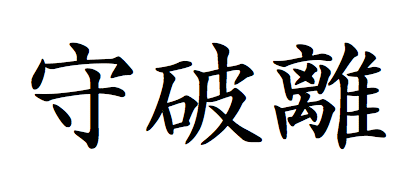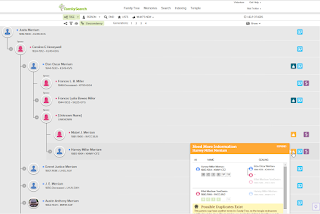As part of the meeting we also discussed barriers both members and nonmembers of the LDS church have in using the website. Research has shown that, among the many barriers discovered, most Family History Consultants are barriers for church members who are beginning users.
Yes, the Family History Consultants.
I was very surprised by this until we began to discuss the reasons why this could be. I am what is considered an engaged user. I frequent the site, use most of the tools, and find relatives I then do work for in the temple. I have done this process more than three times. However, the standard the analysts use for an engaged user is three separate submissions.
They have classified two types of beginner users: those with a full tree and those without a full tree. These beginners make up the largest pool of potential engaged users. An end goal for FamilySearch is to engage members in the use of the website.
You can see how it would be a barrier when you log onto the website and your family tree is full and it appears that all of the work has been done. Members of the LDS church are encouraged to be actively engaged in Family History work. It would be hard to do work when you don't know where to begin. This is why there are Family History Consultants.
The official role of the Family History consultant is to:
"...help members identify ancestral family members. They help members prepare information so that temple ordinances may be performed for their ancestral family members. They help members who do not have access to computers or who are uncomfortable using computers. Where possible, they provide this assistance in members’ homes...They serve regularly as staff members in a local family history center, as assigned. They may also be assigned to teach family history classes in the ward." Church Handbook 2 - 5.4.4Shuhari and genealogy
I do not claim to be an expert in Family History or Genealogy. I am less than a beginner when it comes to understanding Shuhari. I will try to explain how the concept was used within context of our conversation about Family History consultants and Family History.
Shuhari is a Japanese martial arts term which describes the stages of learning to mastery. It has also been used as a way of thinking about learning techniques and methodologies for software development.
守 Shu is the first stage of learning fundamentals. A learner concentrates on how to do the task, without worrying too much about way. "The student works hard to copy the techniques as taught without modification and without yet attempting to make any effort to understand the rationale of the techniques of the teacher." In our context a Shu learner can follow steps to a desired outcome. They cannot reach an outcome without following the steps they have learned. A beginner with a full tree can:
Step 1 - Log onto the website.
Step 2 - Select the tree page.
Step 3 - Find an ancestor born before 1830 and click the tree link for that person.
Step 4 - Change the tree view to descendancy.
Step 5 - Find an ancestor with an orange temple and complete the work.
破 Ha learners start to learn the underlying principles and theory behind the technique. They also start learning from other masters and integrate that learning into practice. They can find the exceptions to the steps that Shu's follow. Ha learners are if-then practitioners, if this, then this. If you cannot find any work within your ancestry tree check the descendency view. If you cannot find a relative enumerated in the 1860 census on FamilySearch then it is worth checking the 1860 census on ancestry.com. If there are duplicate entries for my relative then I need to work through them until one file remains. If your relative was born less than 110 years ago then you must have permission from the nearest living relative to submit their name to the temple.
In the above image, for Shu step five, the person selected was born less than 110 years ago and had duplicates in the database. A Shu user does not know how to resolve these issues. A Ha user can navigate through these issues.
離 Ri learners are masters of their discipline. They aren't learning from other people, but from their own practice. They create their own approaches and adapt what they've learned to the circumstances. "One must now think originally and develop from ones own background knowledge, using original thoughts about the art and test them against the reality of his or her knowledge..."
The Ri masters of Family History and Genealogy are very skilled. We know them as the Family historian or the aunt that has done all of the work in the family. Many wards and stakes have Ri masters that are called as high counselors and Family History consultants.
The analysis from the data collected shows that Ri Family History masters have become so good at their art that when beginners come to them and ask for help instead of showing them a Shu level answer they overwhelm them with their knowledge. The business analyst said that family history consultants need to be Shu level teachers. When asked a question about if a person can find an ancestor to submit to the temple a Ri level advisor says, "it depends" because their experience and learning has taught them that not all orange temples found means that there is work to submit. However a Shu level teacher would walk a beginner through the five steps they know. This is why the brethren are pushing for more and more youth consultants. They only know the five steps and can easily teach it to someone else.
I was taken aback by this analysis. I am not sure I consider myself a Ri level family historian but I am definitely not a Shu. To say that I am a barrier to members of my ward and family to do Family History work really stings.
I have thought about this for the last few days and I think he may be right. I have done enough work to know that an orange temple does not necessarily mean I have a name to take to the temple. My high priest group leader, who I am related to, praises his daughter for the number of names she has found and the joy they have at going to the temple together as a family, while I am cynically thinking of all of the duplicate work they must be doing. My wife has told me a number of times that I make doing the work harder than it needs to be. She just wants to get online, find a name and do the work. I have told her that it is not that easy, maybe I should have just said, "it depends".
Not every user of FamilySearch wants to become a Ri level genealogist. They do not want to be a master. They want things to be simple - easily understood and easily done, like they are being instructed it is by our religious leaders. Some of the negatives of this approach have been duplicate records and work being performed by those who are distantly or even unrelated. FamilySearch has recently programmed rules that forces users to resolve duplicates and observe the 110-year rule.
I believe there is still room for the Ri teachers and learners in wards and stakes. We just need to keep them progressing at their own pace. Family History Centers and conferences like Rootstech teach at different skill levels.
More importantly I believe that with the focus of FamilySearch moving from genealogy to FamilyHistory there is a lot of learning for everyone to do.










No comments:
Post a Comment